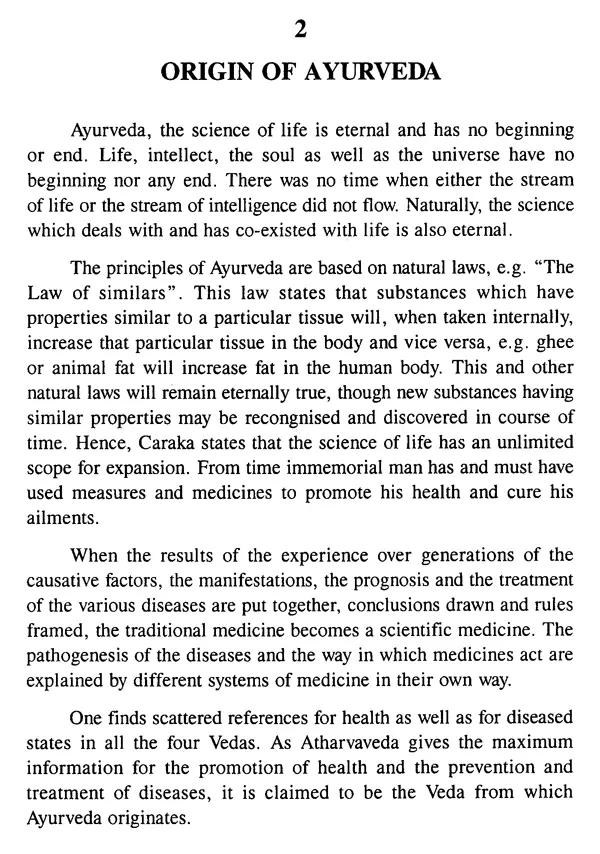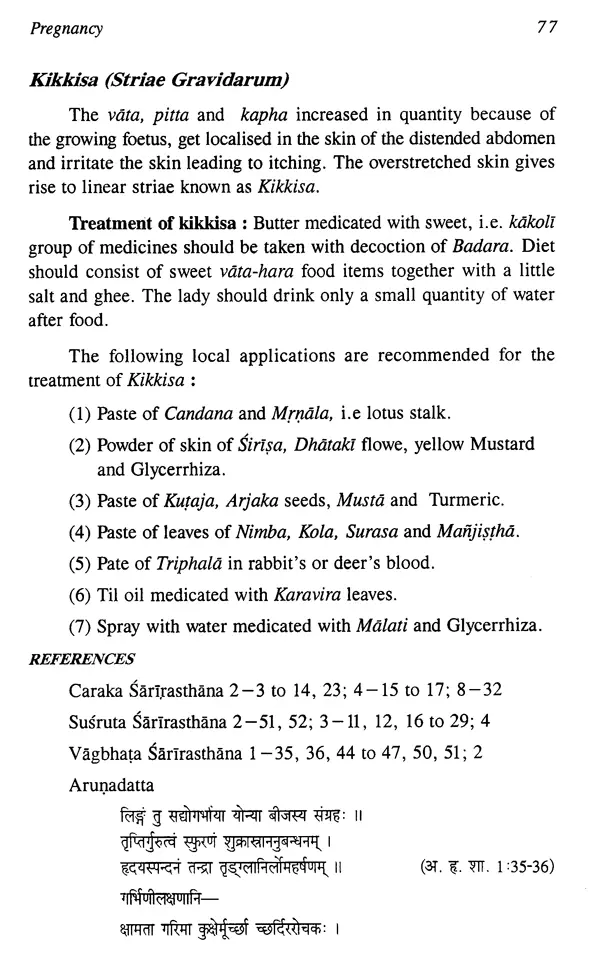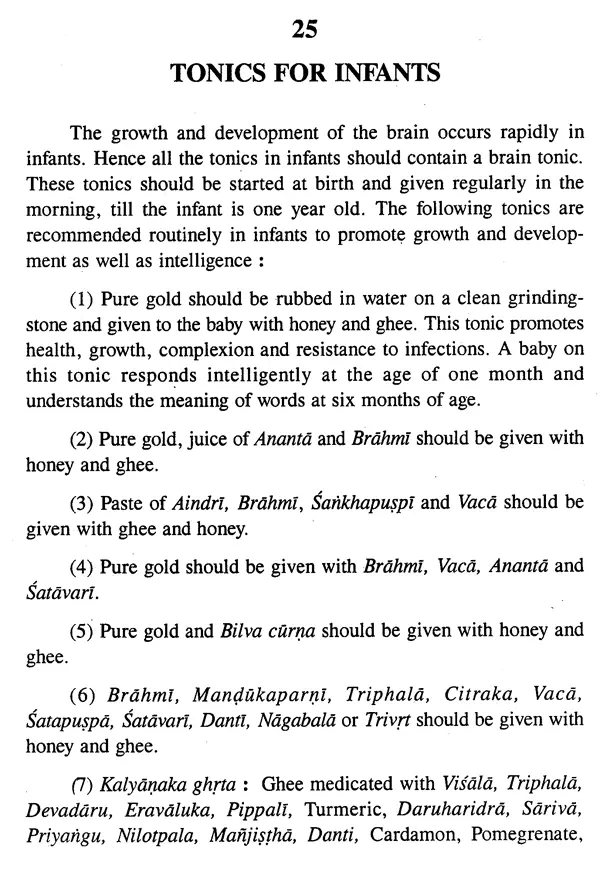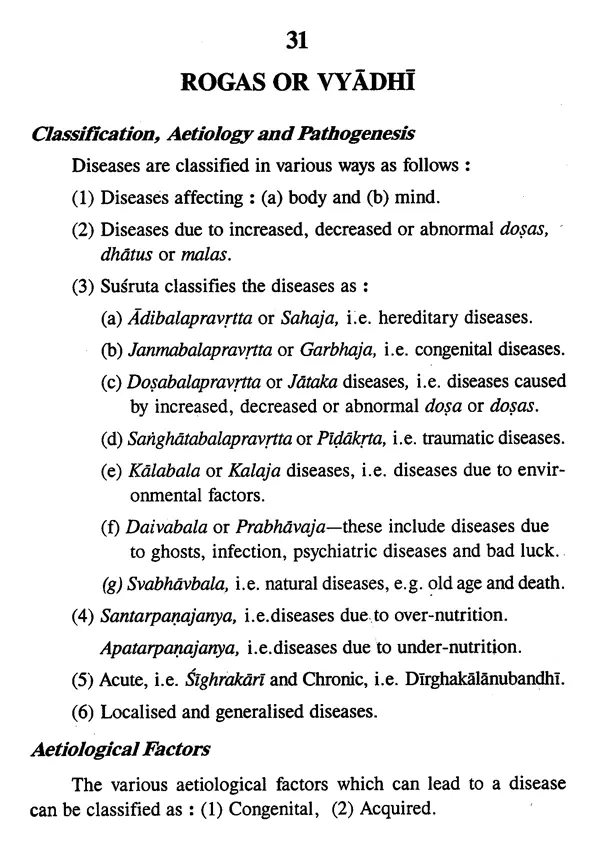
Bala Veda- Pediatrics and Ayurveda
Book Specification
| Item Code: | UAE320 |
| Author: | V. B. Athavale |
| Publisher: | Chaukhamba Sanskrit Pratishthan |
| Language: | English |
| Edition: | 2018 |
| ISBN: | 9788170841425 |
| Pages: | 333 |
| Cover: | PAPERBACK |
| Other Details | 8.50 X 5.50 inch |
| Weight | 340 gm |
Book Description
This book gives the basic principles of Ayurveda in short. Bala-veda mentions how the couple should plan for better progeny. The planning starts before the marriage by selection of appropriate life partner. It gives guidelines for the regimen to be followed by the couple and particularly the wife during menstrual period of life, intercourse, pregnancy and delivery. It gives conditions of foetal malnutrition and how to correct them.
Balaveda gives guidelines for care of the newborn and mother after delivery. It explains as to how the various factors like diet. Activity and psychological conditions of mother affect and vitiate her breast milk which in turn gives rise to various ailments in breast fed babies. It also tells that in these conditions one should give the medicines to mother and advise her appropriate diet so that her milk becomes normal and the baby’s symptoms disappear. Balaveda gives the qualities of milk of cow, buffalo, goat etc. which can be used as alternative to breast milk.
Balaveda describes various diseases associated with dentition. It also gives guidelines for inculcating good habits and manners in children..
The book describes in short the peculiar diseases which affect children and mentions their treatment. It gives principles of treatment in children e.g. how to modify the dose of drugs in children and what medicines and procedures should be avoided in children.
Ayurveda, the Indian System of Medicine, literally means knowledge of life. It includes art of living, science of health and philosophy of life. Though more than 5,000 years old, it is by no means an outdated science. Even today, people of India think and live according to the principles of Ayurveda.
Pediatrics is one of the eight specialities recognized by Ayurveda. Kasyapa Samhita, is the Ayurvedic text book of Pediatrics. The goal of pediatrics is to see that every child grows and develops into a healthy, happy and useful citizen. Ayurveda insists that the birth of every baby should be well planned and should not occur as a matter of chance. The pediatrician should guide both the parents about their diet, activity and daily regime before conception, advise the mother during pregnancy and the child as well as both the parents till the child is of sixteen years. Obstetrics and gynecology constitute part of pediatrics, as the birth of a healthy baby is the main aim of obstetrics and gynecology. Birth is only an event, in the life of a child. Much more emphasis is laid on the development of a healthy and strong mind so that the child is trained to withstand all the stresses and strains of life with a smiling face.
Apart from medicines, many more aspects and principles of life can be learnt from this Great Science. I consider myself extremely fortunate, to be ale to present the main aspects of pediatrics in Ayurveda in the form of Bala-Veda, i.e. science of child life.
Ayurveda means "Science of life", i.e. the science that imparts all the knowledge of life. Life is defined as a constant amalgamation and union of Soul, Mind, Sense, Motor organs and Body. It consists of 8 major sections namely : (1) Medicine, (2) Child life, (3) Surgery, (4) Surgery of head and neck, (5) Toxicology, (6) Bhutavidya or grahavidya which includes : (a) psychiatry, (b) infectious diseases and (c) diseases caused by supernatural power; (7) Jara, i.e. Geriatrics and Rasayana, i.e. science of improving the qualities of tissues with consequent increase in resistance and delay in the process of aging, (8) Vajikarana -Sexology.
Child life is one of the major divisions of Ayurveda. In Astanga Hrdaya' and Astanga Samgraha child life is termed as Balanga of Ayurveda. In Caraka and Susruta Samhitas, it is termed as Kaumarabhrtya, i.e. a section of Ayurveda dealing with child life with special emphasis on nutrition of children. According to Kasyapa, pediatrics is the most important division of medicine, as the other divisions play their role only after the child matures into an adult.
Childhood is divided into : (1) Garbha, i.e. fetus, (2) Ksirada, i.e. an infant entirely on milk diet, i.e. upto 6 months, (3) Ksrannada, i.e. an infant on milk as well as other food items, i.e. from 6 months to 2 year, (4) Annada, i.e. mainly on food apart from milk-from 2 to 16 years. This period is further divided into : (a) Bala, i.e. a preschool child between 2 to 5 years, (b) Kumara, i.e. a school child between 6 to 16 years.
Life starts at the time of conception by the union of the sperm, ovum and the individual soul principle together with the mind. Birth is only an event in an individual's life. Childhood extends upto the age of 16 years. Growth and development is largely completed during childhood, though it continues to some extent upto 34 years of age according to Kasyapa and upto 30 years according to Caraka. Children have delicate bodies and their tissues are immature and not well-differentiated. They have not acquired full strength and hence do not tolerate severe physical exertion. Their digestive power, courage, knowledge, memory, control of desires, emotions and other mental processes are less developed than those of adults. However, they excel in the power of formation of tissues, the regeneration of tissues and the healing of wounds. By nature, they are attractive and pleasant.
Mensturation starts at the age of 12 years in girls and secondary sexual characters develop during adolescence. In children the kapha element dominates and they are prone to kapha disorders.
The pediatrician's role begins even before conception and he should know all about the reproductive organs of both the parents and their diseases so that he can advise them regarding the diet, activity and medicines which are good both for procreation and for the offspring. Ayurveda does not have a separate section for obstetrics and gynaecology as it is considered to be an integral part of pediatrics.
The goal of childhood is to see that the child develops into a healthy, happy and useful citizen. Hence, a pediatrician should know the characteristics of a healthy life, a happy life and a useful life.
Healthy Life
A healthy individual has a healthy body as well as a healthy mind. He has a well balanced constitution and all his tissues and organs function at an optimal level. He is well built, healthy and strong having a proportionate and shapely physique. His skin is lustrous and complexion pink. He has a swift rhythmic gait and a deep, voluminous, melodious and resonant voice. While enjoying sex and having good libido, he has a full control over the sex urge. He has a good appetite and digestive power and regular bowel habits.
He enjoys all seasons equally well. His sleep is sound. He is energetic and undertakes physical and mental chores with enthusiasm and skill. He rarely falls ill. Though capable of enjoying all the wordly pleasures he does not crave for them. He looks younger than his age and enjoys a full and healthy life of 100 years.
Healthy Mind
The characteristics of a healthy mind are :
(1) A happy and contented state of mind, cheerful disposition and pleasing manners,
(2) Feeling of security,
(3) Self esteem and self confidence,
(4) Absence of tension and frustration, (5) Ability to accept and give love, affection and happiness,
(6) Insight or knowledge of self. Ability to apply one's capacities to the task at hand,
(7) The maximum ability of getting along with people and be friendly with everyone,
(8) Ability to adjust easily in every respect,
(9) Stability of mind which does not fluctuate of waver,
(10) Fortitude and courage,
(11) Intelligence and good memory,
(12) Creative ability,
(13) Follower of the dictates of one's conscience,
(14) Perfect control over one's own desires, instincts, emotions, behaviour, actions and speech,
(15) Respect for teachers and learned people, (16) Truthful speech, clear thought and correct action.
(17) Humility and gratitude,
(18) Well wisher of people and works for the uplift of the society.
**Contents and Sample Pages**















